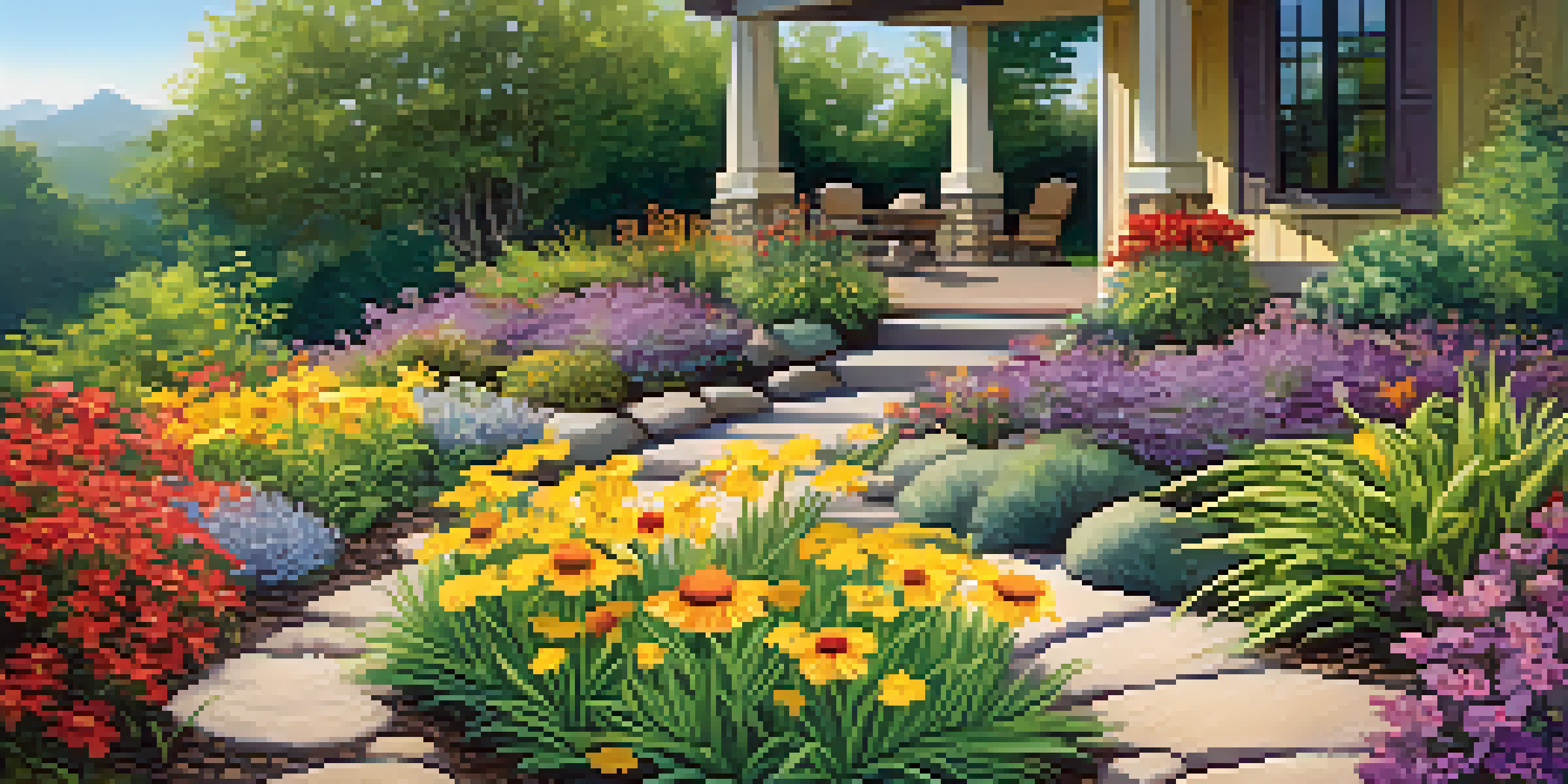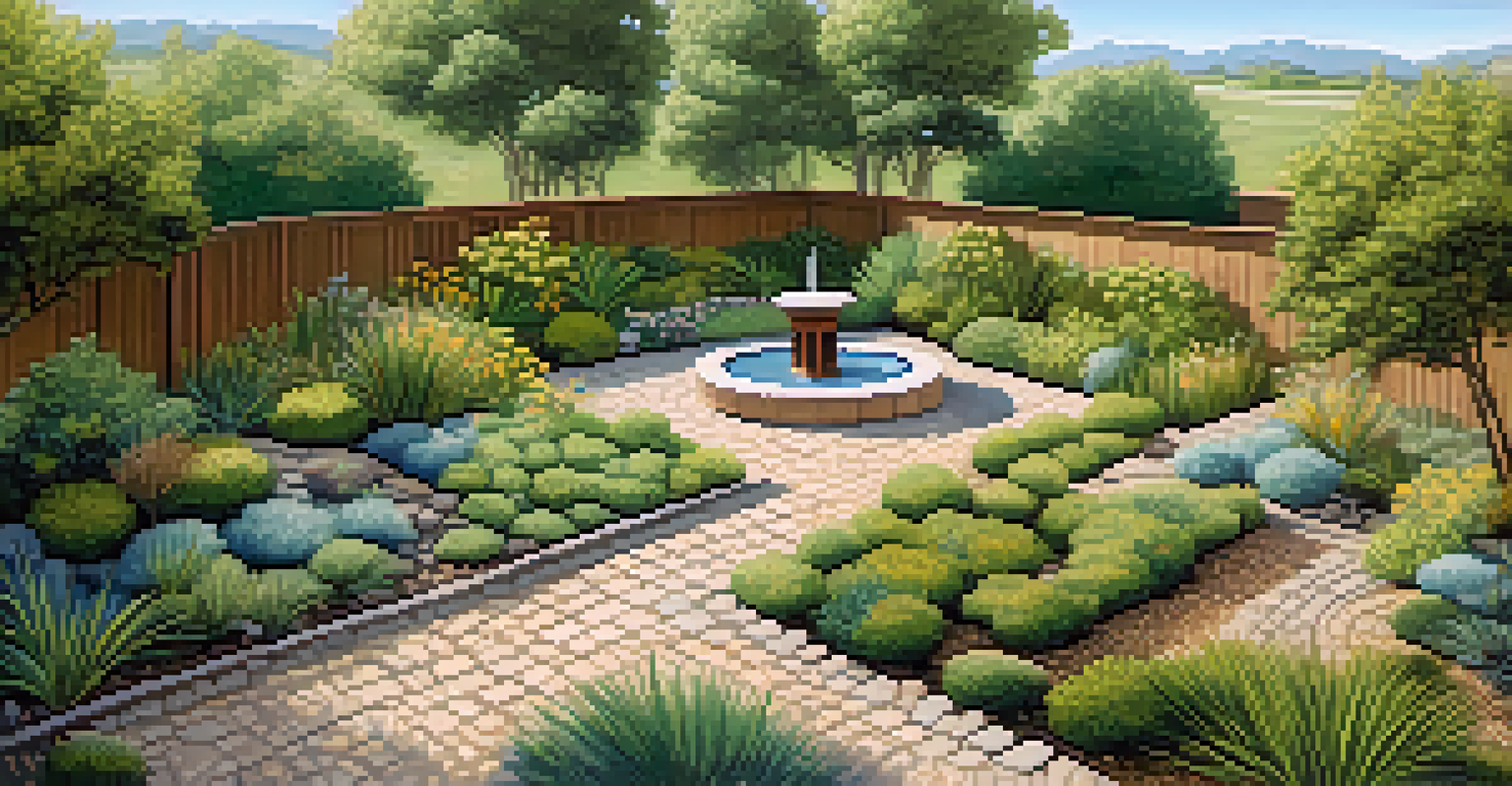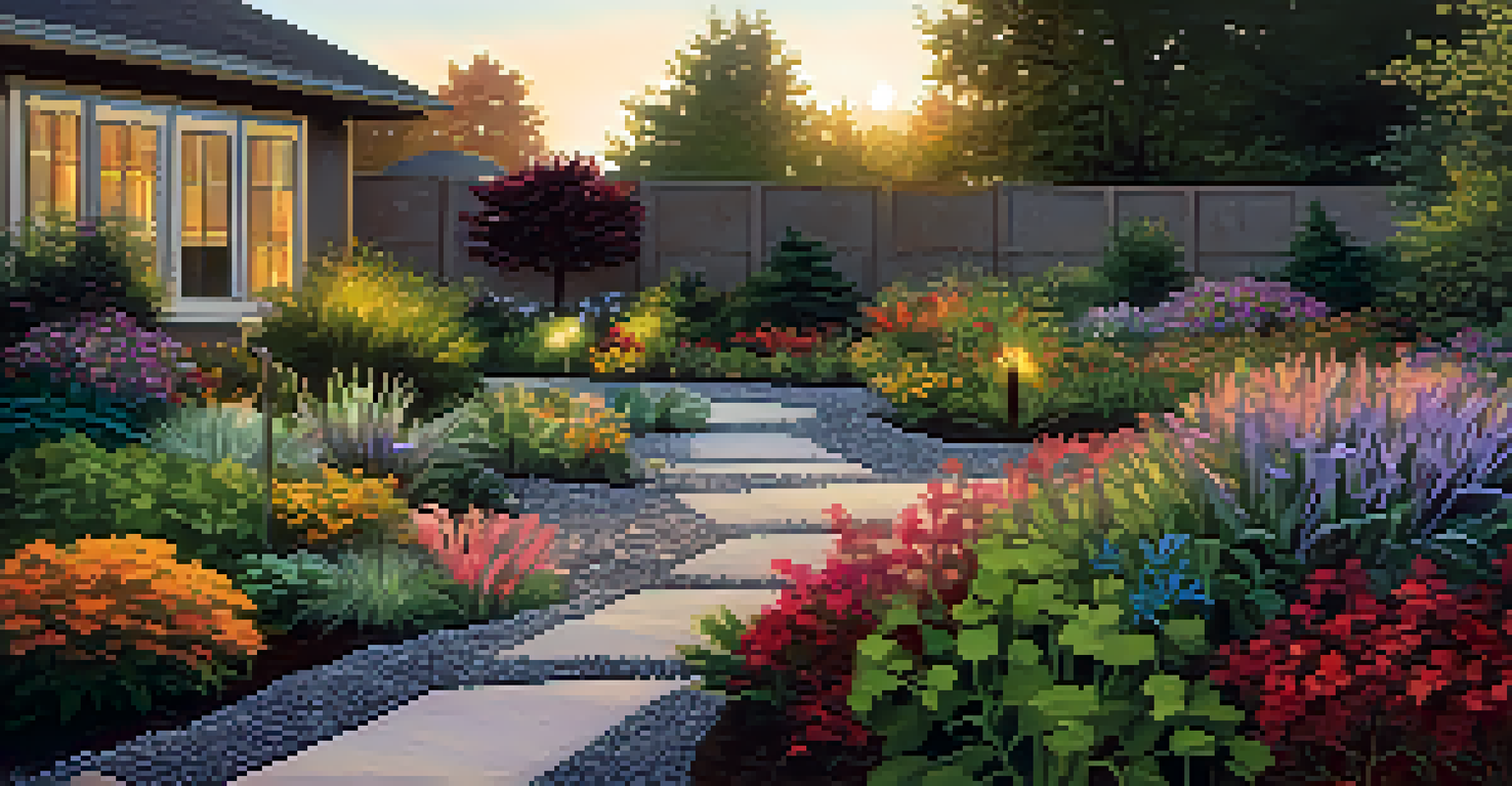Creating a Water-Smart Landscape with Perennials

Understanding Water-Smart Landscaping Basics
Water-smart landscaping is all about designing gardens that use minimal water while still looking beautiful. This approach not only conserves precious resources but also lowers maintenance costs. By focusing on native and drought-resistant plants, you can create a vibrant environment that thrives with less water.
The best time to plant a tree was twenty years ago. The second best time is now.
Perennials are a key component of water-smart landscapes, as they return year after year, reducing the need for replanting. They typically have deeper root systems than annuals, allowing them to access moisture from deeper soil layers. This resilience makes them an excellent choice for sustainable gardening.
Ultimately, a water-smart landscape benefits both the gardener and the environment. By implementing these strategies, you can contribute to water conservation efforts while enjoying a lush, thriving garden that requires less effort to maintain.
Choosing the Right Perennials for Your Climate
Selecting the right perennials is crucial for creating a water-smart landscape. Start by researching local plant varieties that are known for their drought resistance and adaptability to your specific climate. Native plants are often the best choice, as they are already adapted to local conditions and require less water.

Consider groupings of plants that can share resources, such as moisture and nutrients, to further enhance water efficiency. For example, plants with similar water needs can be grouped together, allowing for more targeted watering. This not only conserves water but also promotes healthier plant growth.
Choose Native Perennials Wisely
Selecting drought-resistant perennials that thrive in your local climate minimizes water usage and enhances garden resilience.
Don’t forget to take into account the blooming seasons and colors of the perennials you choose. A well-planned selection can create a beautiful tapestry of flowers throughout the year, keeping your landscape visually appealing while still being water-smart.
Designing a Layout for Efficient Water Use
Creating an effective layout for your garden can significantly enhance water efficiency. Start by analyzing your garden’s sun and shade patterns, as well as drainage areas. By strategically placing plants based on their light and water requirements, you can optimize growth and minimize waste.
Nature does not hurry, yet everything is accomplished.
Incorporate features like swales or rain gardens to capture and retain rainwater. These elements not only help with drainage but also keep moisture available for your plants during dry spells. Think of them as natural reservoirs that benefit your landscape.
Additionally, consider using mulch to retain soil moisture and suppress weeds. A layer of organic mulch around your perennials can help keep the soil cool and reduce evaporation, ensuring your plants get the hydration they need with less frequent watering.
Incorporating Hardscaping to Enhance Water Efficiency
Hardscaping elements can play a vital role in a water-smart landscape. Patios, pathways, and decorative stones not only create visual interest but also help manage water flow and retention. By using permeable materials, you allow rainwater to seep into the ground rather than running off.
Consider integrating features like gravel pathways or stone borders to guide water where it's needed most. This can effectively direct runoff to specific areas, helping to nourish the plants that need it without creating puddles or erosion.
Optimize Garden Layout for Water
Designing your garden layout to consider sun, shade, and drainage can significantly improve water efficiency and plant health.
Furthermore, thoughtful hardscaping can reduce the area of grass that requires regular watering, which is often one of the thirstiest elements in a landscape. By replacing high-water-use areas with decorative stones or drought-tolerant plants, you can create a stunning and sustainable garden.
Watering Techniques for Your Perennial Garden
Understanding effective watering techniques is essential for maintaining a water-smart landscape. Drip irrigation systems are an excellent investment, as they provide water directly to the root zone, reducing wastage and evaporation. This method ensures your perennials receive consistent moisture without over-saturating the soil.
Timing is also important; watering early in the morning or late in the evening minimizes evaporation and allows water to penetrate the soil more effectively. This simple adjustment can make a significant difference in how much water your plants receive.
Additionally, observe your plants and adjust your watering schedule based on their needs. Signs of thirst, such as wilting or yellowing leaves, can indicate that your plants need more attention. By being responsive to your garden’s requirements, you can promote healthy growth while conserving water.
Maintaining Your Water-Smart Landscape Year-Round
Ongoing maintenance is key to ensuring your water-smart landscape continues to thrive. Regularly check for weeds, which compete for water and nutrients, and remove them promptly. This not only keeps your garden healthy but also reduces the need for additional watering.
Seasonal care is also important. In the fall, consider cutting back perennials and adding compost to nourish the soil. This practice helps retain moisture over the winter months and prepares your garden for a vibrant spring.
Maintain Your Landscape Year-Round
Regular maintenance, such as weeding and seasonal care, is essential for keeping a water-smart landscape thriving and sustainable.
Finally, keep an eye on your irrigation systems and adjust them as necessary. Regular maintenance of hoses and drip lines can prevent leaks and inefficient watering, ensuring that every drop counts in your water-smart landscape.
Benefits of a Water-Smart Landscape for the Environment
Creating a water-smart landscape goes beyond personal benefits; it positively impacts the environment as well. By using less water, you contribute to the conservation of local water supplies, which is crucial in areas prone to drought. Every drop saved is a step towards sustainability.
Additionally, water-smart landscaping reduces the need for chemical fertilizers and pesticides, as native plants are often more resistant to pests and diseases. This means less runoff into local waterways, helping to protect aquatic ecosystems.

Ultimately, embracing a water-smart approach fosters biodiversity and creates habitats for local wildlife. Birds, bees, and butterflies thrive in gardens that feature native plants, creating a vibrant ecosystem right in your backyard.